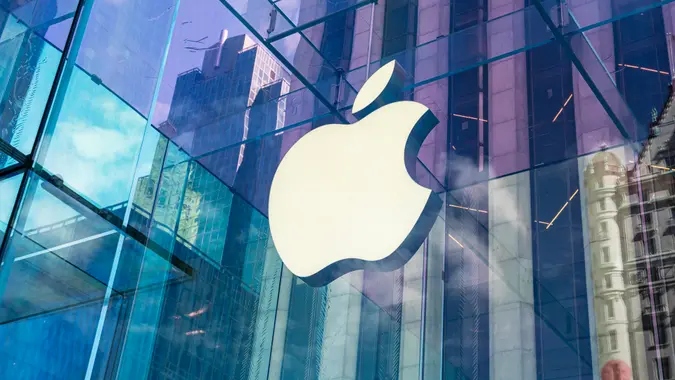If You Had Invested in Oil Stocks During the Gulf War in the 1990s, Here’s How Much You’d Have Today

Commitment to Our Readers
GOBankingRates' editorial team is committed to bringing you unbiased reviews and information. We use data-driven methodologies to evaluate financial products and services - our reviews and ratings are not influenced by advertisers. You can read more about our editorial guidelines and our products and services review methodology.

20 Years
Helping You Live Richer

Reviewed
by Experts

Trusted by
Millions of Readers
Oil prices initially spiked when the Gulf War began on August 2, 1990, as investors feared a global supply shutdown. However, as those fears subsided throughout the conflict, oil prices began steadily trading down.
Since then, the price of oil has gone through numerous cycles of boom and bust, with oil stocks similarly trading up and down in a cyclical manner. Although share prices have been volatile, dividends have always been a big part of the total return of major oil companies, such as Chevron, ExxonMobil and ConocoPhillips.
Here’s a look at how much money you could have made if you invested in oil stocks 35 years ago, right before the beginning of the Gulf War, with data from Yahoo Finance, Microtrends and Total Real Returns.
Chevron (CVX)
- Value of $10,000 invested 35 years ago with reinvested dividends: $254,000
- Current dividend yield: 4.57%
- YTD performance: 2.44%
- Current stock price: $147.98
Chevron is the “widows and orphans” stock of the oil patch, to use a Wall Street colloquialism. It favors a more conservative, disciplined approach than some of its competitors, avoiding risky projects and only timidly dabbling in renewable energy.
ExxonMobil (XOM)
- Value of $10,000 invested 35 years ago with reinvested dividends: $249,000
- Current dividend yield: 3.67%
- YTD performance: 3.00%
- Current stock price: $110.05
Exxon and Mobil were two separate companies throughout the Gulf War, so you’re essentially getting two companies in one when you buy XOM. The two oil giants merged in 1999. The company was known historically for being more aggressive, though it has adopted more of a risk-management approach in recent years. One of its main differentiators is its focus on deepwater production and its low-key approach to its renewables strategy.
BP p.l.c. (BP)
- Value of $10,000 invested 35 years ago with reinvested dividends: $115,000
- Current dividend yield: 6.41%
- YTD performance: 6.90%
- Current stock price: $31.30
As a European company, BP takes a bit of a different approach than its American competitors. BP is aggressively exploring and developing renewable energy projects, including everything from wind and solar to hydrogen power. Like many of its European peers, it also pays a heftier dividend than its American counterparts, offering more than double the yield of ExxonMobil. Its performance since the Gulf War, however, has been much less compelling than either Chevron or ExxonMobil’s.
The Bottom Line
While the Gulf War initially pushed the prices of oil companies up, it ultimately didn’t move the needle much as the anticipated oil shock never really materialized. One of the risks of investing in oil stocks is that they are notoriously cyclical. Restrictions on supply can send oil prices and stocks screaming higher, while overproduction or a lack of demand, as often accompanies a recession, can drag them back down. The hefty dividends that most oil stocks pay help smooth out the ups and downs for investors, and over the long run they contribute greatly to the total return of stocks in the industry.
More From GOBankingRates
 Written by
Written by  Edited by
Edited by 
























